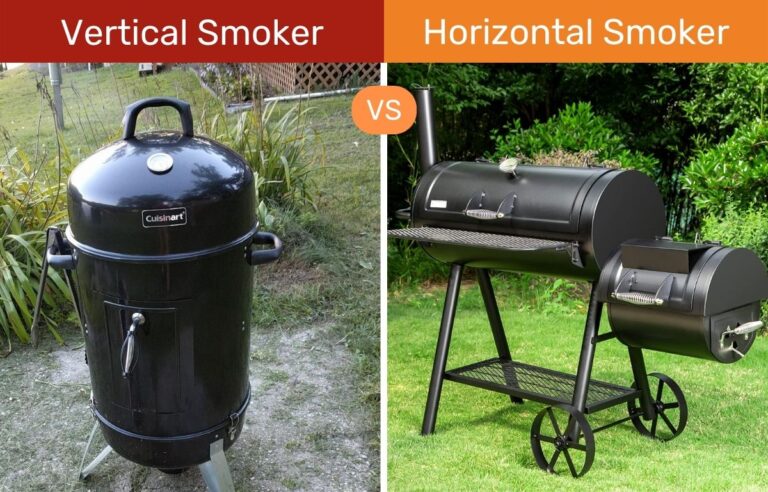Pellet Grill vs Charcoal Grill – Choose One Suitable Option
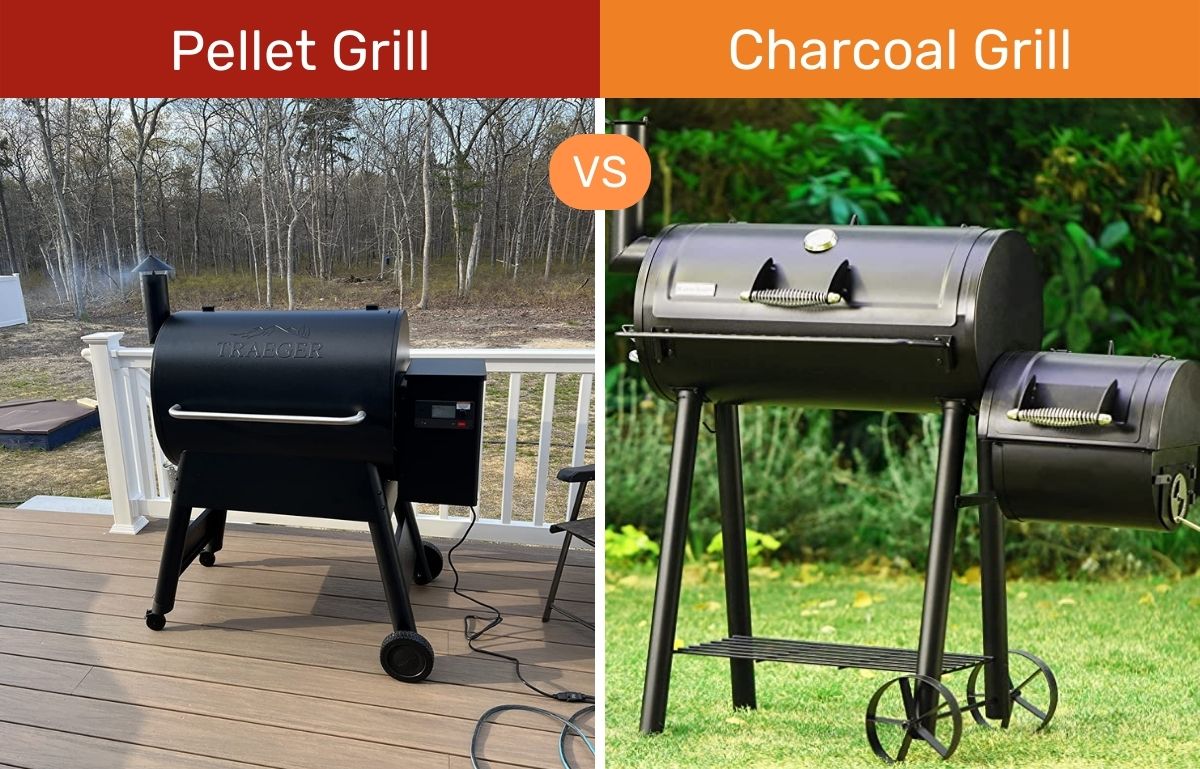
FaveGrills is reader-supported. If you purchase by clicking a link on this page, we may earn an Affiliate Commission at no extra cost. Learn more
Summer is the ideal season to fire up the grill and gather your loved ones for a tasty supper. Deciding on the best grill for you might be challenging because so many varieties are available.
You may want to move to a different grill or purchase your first one. Choosing a smoker might be challenging because of the wide variety of models and brands available.
To assist you in choosing which grill best suits your needs, we’ll compare charcoal and pellet grills in this blog post.
Pellet Grill vs Charcoal Grill: Main Differences
You can always be sure to make some delectable foods with a pronounced smoky flavor on a pellet or charcoal grill. The similarities end there, though, because these grills are very distinct.
One of the key distinctions between a pellet grill and a charcoal grill is the fuel type. Pellet grills use pellets and wood chips. But a charcoal grill uses charcoal, wood chips, and wood chunks.
A pellet grill’s simplicity is its key advantage. You can adjust the temperature easily, but you will have difficulty dealing with the temperature on a charcoal grill.
Most pellet grills cook indirectly and reach a maximum temperature of 430–500°F, which isn’t yet high enough for effective searing. On the other hand, charcoal is beneficial since they generally cost less and produce tremendous heat reaching up to 1200F.
Pellet grills work at low and slow cooking methods, which are better for smoking. On the other hand, charcoal grills operate at high temperatures so grilling and searing are suitable for them.
However, to get the finest results from a charcoal grill, there is a technical steeper curve, and it can be challenging to maintain temperature when using charcoal briquettes.
How Do Pellet Grills Work – Overview
Although one of the more recent additions to the cooking scene, pellet grills are quickly gaining popularity as many choose them over the numerous other types.
These grills, which are largely electric, cook food using compressed wood pellets, which, in addition to distributing heat more evenly. They also generate a lot of smoke to give meals a flavorful boost.
Additionally, integrated temperature controls will make it simple for users to adjust the temperature more precisely. They are perfect for searing and roasting, but smoking suits them better.

Pellets burn cleanly and thoroughly, leaving behind little ash for easier cleanup, in contrast to additive-filled charcoal kinds like briquettes.
However, briquettes and lump charcoal are frequently more expensive than pellets, and these grills can be fairly expensive.
What do we like most about pellet grills?
Let’s watch some noteworthy pros of pellet grills.
- Food quality: Wood pellets provide super-quality food and a smokey flavor. If you love BBQ, you should use a pellet grill to maintain your taste buds. If you want to enhance the smoky flavor, you should go with low and slow cooking techniques.
- Ease of use: Pellet grills come with digital controllers and are suitable options for grilling steak and other meat items. You can set the temperature once, and the food will be ready quickly.
- Easy to clean: Wood pellets are present in the firebox, and it’s easy to clean the ashes because there is a separate outlet to remove ashes, and you don’t need to wash the whole grill.
- Fuel efficient: These grills are fuel efficient because wood pellets feed inside the firebox automatically, and fuel consumption is low compared to other grills.
What we don’t like?
Let’s discuss the cons of pellet grills.
- Not portable: Wood Pellet smoker is not portable because they need electricity to operate. So, you should have an electric socket near your grill.
- Not suitable for rain: These grills are not resistant to rain because the electric circuit may cause fetal results in rain.
How Do Charcoal Grills Work – Overview
The charcoal grill is the best choice for anyone looking for a traditional grill that produces delicious cuisine, whether you are searing or smoking food.
Unlike pellet grills, this traditional grill employs lump or charcoal briquettes as its fuel source, which cooks food effectively and imparts a pleasant smoky flavor.
Because it has no digital components to assist with lighting and temperature control, as you will see in a pellet grill, cooking on a charcoal grill requires some experience. Briquettes will require more time and effort to light than charcoal chunks, which light up rather quickly.
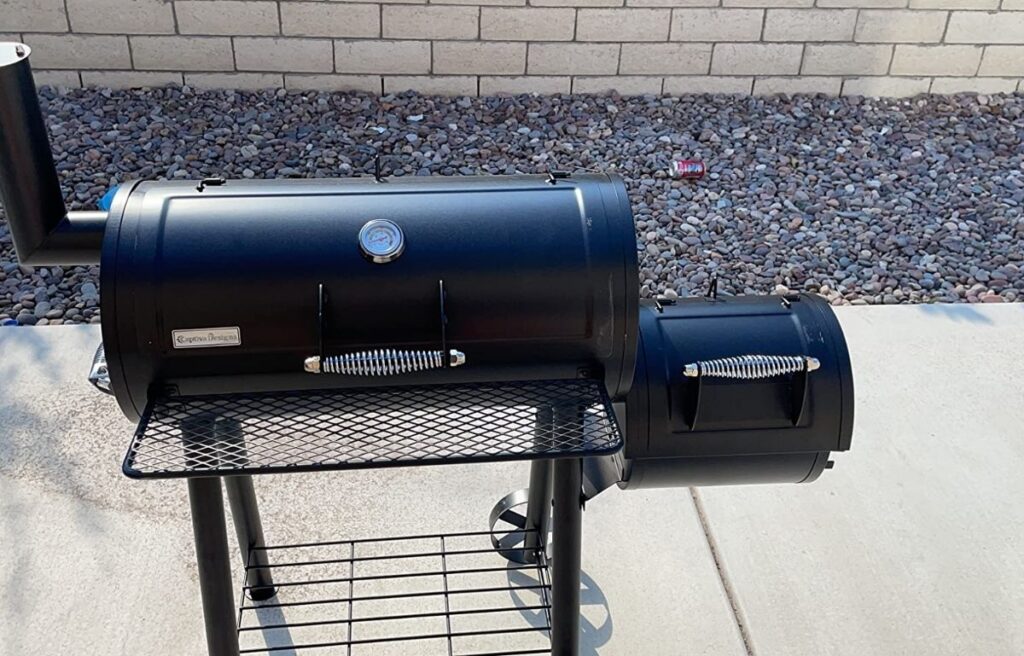
Cleaning may be difficult if you use briquettes as fuel because most of them contain numerous additives and produce a large amount of ash.
Although they can also smoke food reasonably well, charcoal grills often cook at higher temperatures than pellet grills, making them suitable for searing and grilling than smoking.
What do we like most about charcoal grills?
Let’s explore some nominal pros of charcoal grills.
- Strong smokey flavor: Charcoal grills impart a strong smokey flavor to food. To prepare your meal quickly, you can consider a charcoal grill to make a substantial BBQ.
- Inexpensive: These grills are inexpensive and available in every price range. So, you will find lower to higher-end models in charcoal smokers.
- Portable: These grills are portable because they run on wood chunks, and you can use them for camping and tailgate parties.
- Attain desired cooking temperature: Charcoal grills attain a higher temperature and provide a strong taste.
What we don’t like?
Let’s discuss the cons of charcoal grills.
- Take more time and effort: You need to learn grilling techniques when using charcoal grills. Higher temperature regulations make it harder to operate with a charcoal grill.
- Messy and challenging clean-up: Charcoal burns and leaves ashes you may clean with difficulty.
Top Tip by FaveGrills
With a bit of programming, pellet grills can keep the temperature steady. Different tastes of wood pellets can result in various types of meat. They are electrically powered. Second, cleanup is a must after each meal.
Pellet Grill vs Charcoal Grill: Head-to-Head
Let’s start by contrasting charcoal and pellet grills to see what makes them unique and what they have in common.
Influence on Flavor
The smoky flavor that both grills will impart to food—something you cannot get with any other grill type—is one of the main factors behind their popularity.
The flavor you get from the two different grills is not the same, even though both grills produce a comprehensive Smokey flavor to the food.

You will receive a moderate smoky flavor from the pellet grill because they won’t be as smoky as charcoal. But with charcoal, you can be sure to achieve a strong smoky flavor, and because of the distinct aroma and flavor, it is simple to identify anything that is cooking over charcoal.
Additionally, compared to a pellet grill, adding some fuel to a lit charcoal grill can produce an even more potent smoky flavor. Pellets operate very efficiently and emit very little smoke. Food prepared on grills with pellet burners typically has a light smoky flavor, which is appreciated for many smoked foods.
On the other hand, you can still use pellet grills to enhance flavor. Charcoal briquettes generate a richer smokey aroma, especially when combined with wood pieces and chips.
The low or slow grill is the ideal choice for pellet grills. Briskets and ribs are among the family’s most popular items. Temperature stability throughout the day is made possible by computerized controls. The temperature will be the same whether you use charcoal or pellets to grill. The best way to grill meals is on a charcoal grill.
Temperature Regulation
A basic pellet grill can cook food at temperatures as low as 250 c and as high as 550 degrees, making it suitable for both grilling and low-and-slow cooking.
On the other hand, a charcoal grill can readily reach temperatures of 450 degrees, which makes them ideal for high-temperature, quick cooking methods like searing and grilling. You can cook slowly and simply if you’re using briquettes rather than lump charcoal, just like you would with a pellet barbecue.
You need to quickly manage the temperature in addition to being able to achieve high or low temperatures. However, a pellet grill will perform better than a charcoal grill in temperature control.

Digital temperature controls that are simpler to use and more accurate are used in most pellet grills. Turning a dial is all that’s needed to control the temperature on these grills.
With a charcoal grill, you can also regulate the temperature, but it fluctuates and needs some practice because you have to learn how much charcoal is required and how to open or close the air vents to adjust the temperature.
Although temperature control varies greatly, smokers that use charcoal or pellets can reach cooking temperatures of around 500°F. There are manual grills and more advanced or electrically controlled grills. A digital pellet smoker is particularly good at controlling temperature. However, you can also use a smoker tube to impart a matchless smoky taste to your food.
As long as you can regulate the heat in a smoker, it can maintain stable temperatures and is ideal for low heat. Reduce the temperature to zero. It’s really easy to use the oven. You can select a temperature setting for your meals, and everything will be good. For the purpose of cooking food, there is no need to keep a guard around the cigarette burner.
Fuel Source of Both Grills
These two grills are different due to their varied fuel sources, which burn wood in unique ways, even though both employ wood fuel sources.
Pellet griddles can hold much bigger pellets that can be smoked in large quantities for long periods but will vary by size. Manufacturers will always indicate how much hope you have in pounds, although do not assume that bigger hoppers will make cooking more enjoyable for you if needed.
Larger grilling machines burn up to 40 pellets per hour, so there’s always a trade-off between them. Consequently, pellet grills are suitable for slow and low-speed cooking where a consistent temperature and huge hopper size may benefit.
As their name suggests, the compressed culinary pellets used in pellet grills burn slowly and evenly, making them ideal for smoking meats. Additionally, numerous pellets are offered depending on the type of wood used.
On the other side, most charcoal grills can either use lump charcoal, a natural fuel source created by heating bits of wood or logs in low oxygen environments, or briquettes, which are larger than pellets and created by combining sawdust with various ingredients.
Ease of Use
Regarding usability, pellet grills appear to be superior to charcoal ones. Most of these grills require you to load the side hopper with pellets, choose the temperature you want, and fire it up so it can heat up before you start cooking.
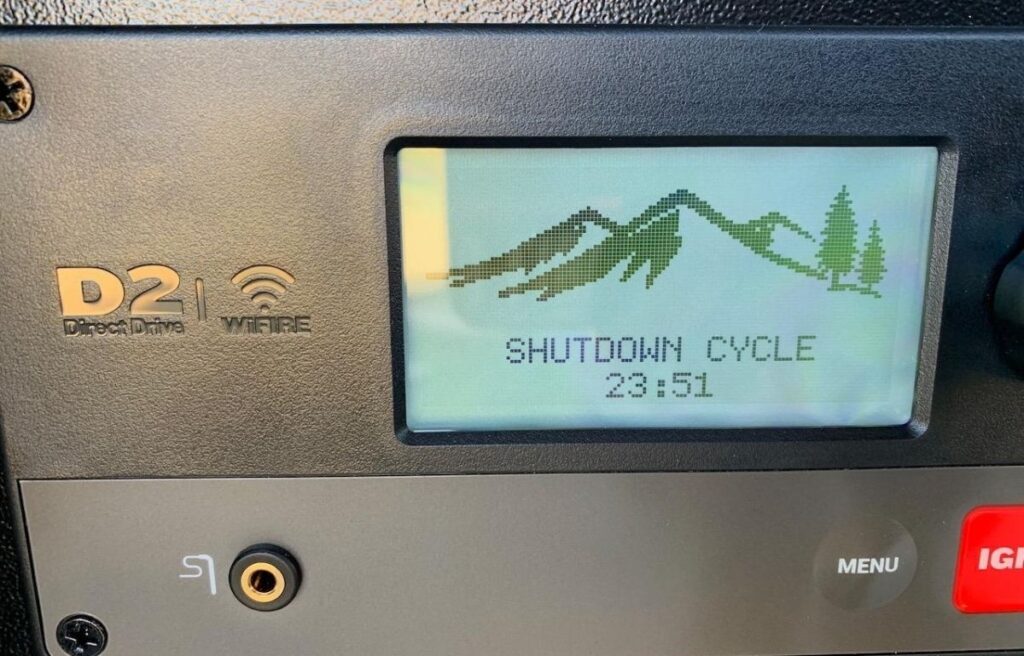
A charcoal grill will require comparatively more labor when cooking. It will take more time and effort to get the charcoal to fire at first, especially when using briquettes. Second, achieving the precise temperature you need for grilling or cooking will be challenging.
In general, pellet grills are simpler to use than charcoal barbecues. They serve a variety of purposes. The features that pellet grills can provide include WiFi controls and several smoking modes. There is a nearby outside outlet because it needs electricity to operate. To reach the right temperatures before cooking, the charcoal grill needs some time to fire the coal.
While pellet grills seldom take longer than 15 minutes to prepare, charcoal kettle grills can take up to 35 minutes, indicating that you will have an easier time using them.
Nominal Runtime
The typical run time for each of these grills will vary depending on several variables, including the cooking, temperature, and the specific charcoal or pellet type you’re using.

However, while cooking low and slowly using average pellets, you can anticipate a maximum run time of up to 7 hours. Additionally, adding more pellets is as simple as opening the side hopper and dumping some in if you run out while still cooking.
On the other hand, whether you use charcoal or briquettes, charcoal grills will surprise you with how long they can operate. Using charcoal, you may quickly get up to 12 hours of run time for low and slow cooking. However, burning your charcoal in as little as an hour is feasible if you cook high and promptly.
Average Prices
The costs of buying and using a pellet grill are often higher than those of a charcoal barbecue.
A decent pellet grill will cost you at least $300, and they may cost up to $1,200 or even more. In contrast, charcoal grills are available for as little as $40 for a basic model, and even the larger and more feature-rich ones rarely cost more than $300.
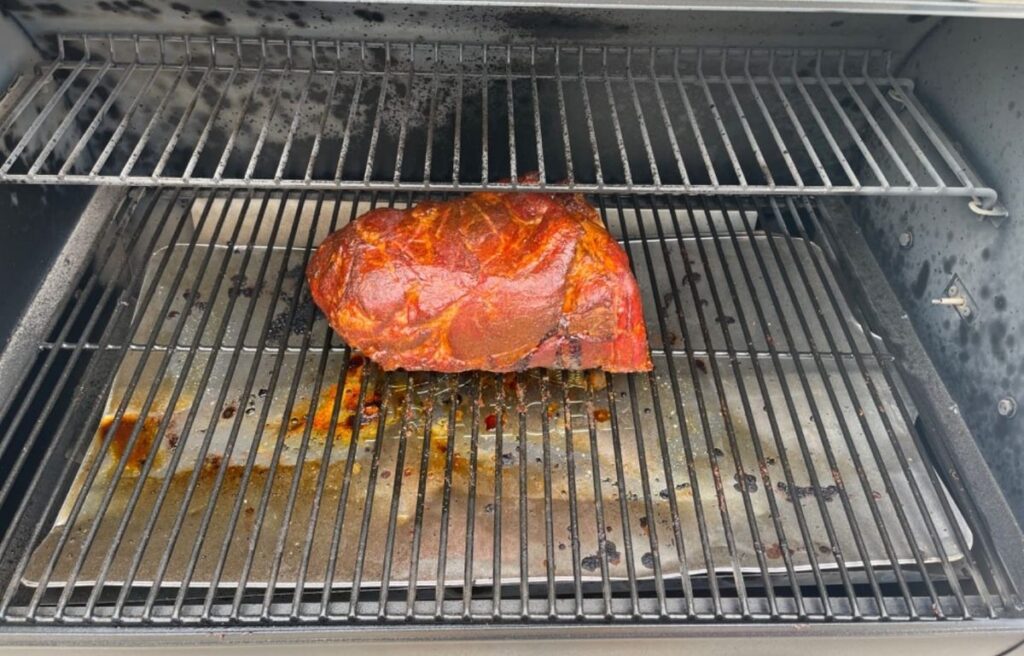
The wood pellets and charcoal you use will typically impact the operating costs.
Some wood pellet brands can be somewhat expensive, so your operational costs will be more significant. However, even if briquettes are less expensive than lump charcoal, running a charcoal barbecue will still be more cost-effective.
Versatility
Let’s be honest: smokers use pellets for grilling because they can do that. Lower temperatures are simple, but a grille’s high temperature is challenging. Using a heating element, you can increase the temperature by up to 100 F. In contrast to charcoal grilling steaks and other fast cuisines, charcoal smoking is incredibly simple, low-tech, and quick.

Operating Costs
A pellet barbecue burns wood pellets as fuel instead of charcoal. The most efficient charcoal powder is far less expensive than other pellets. The augers on the less expensive models are typically tucked within the hopper to feed the pellets. If your grill is no longer covered by its warranty, you should also consider the cost of replacement parts in addition to the price of pellets.
Charcoal briquettes are relatively affordable and may be used for both rapid and gradual cooking. Lump charcoal burns faster and is often less expensive if it is hotter and lighter. Most people choose to lump in grills since doing so is more expensive than using a single lump.
Maintenance
Pellets require a lot of manual labor to maintain. After two cookings, you should remove the grease plates, deflectors, and slurry to eliminate the accumulated and unburned food. Because the grill has more intricate elements, pellets are more likely to malfunction and require replacement.
However, charcoal grills are frequently dusted between usage and only require one clean-up after each use.
Are charcoal Grills and Pellet Grills Portable?
Due to their lightweight, charcoals are simple to travel, and various portable alternatives are available at different prices. In comparison to other grills, the pellet grill is heavier. These issues are challenging for those who enjoy bringing out the grill for picnics.
Now, pellet grills are available in advanced and convenient designs. You can set and forget the rest. Moreover, the digital panel will completely solve your problems in handling the smoking session. If you want more advanced models which consume fewer pellets, you should check their compatibility to use pellets for outdoor cooking.
What is the Fuel Capacity of Charcoal and Pellet Grills?
Pellet griddles, which vary in size, may contain significantly larger pellets that can be smoked in vast amounts for extended periods of time. Don’t think that larger hoppers will make cooking more joyful for you if necessary; manufacturers will always specify how much hope you have in pounds.

The trade-off between larger grilling devices, which can burn up to 40 pellets per hour, is constant. As a result, pellet grills are appropriate for low-speed and slow cooking where a constant temperature and large hopper size may be beneficial.
Who is the Winner? Head-to-head Summary
Let’s share a short quick summary of the relative winners in a head-to-head comparison.
| Features | Relative Winner |
|---|---|
| Influence on Flavor | Pellet Grills |
| Temperature Regulation | Pellet Grills |
| Fuel Source of Both Grills | Pellet Grills |
| Ease of Use | Pellet Grills |
| Nominal Runtime | Pellet Grills |
| Average Prices | Charcoal Grills |
| Versatility | Pellet Grills |
| Operating Costs | Charcoal Grills |
| Maintenance | Charcoal Grills |
Do You Know?
Meat should be smoked until it attains a safe internal temperature of 160F. For reference, read this article.
Final Thoughts
Although charcoal and pellet grills are quite capable of grilling, they differ significantly in features and performance, making them better suited for various situations and people.
The pellet grill is your best option if you want a grill that is simple to use, won’t need much of your time, and still has a good smoky flavor. You must watch for a pellet grill if you are a slow and low-cooking fan.
On the other hand, the charcoal grills are your best option if you’re one of those barbecue enthusiasts who prefers a more traditional hands-on approach to barbecue and are also searching for something that will offer you a robustly smoky flavor.
Due to the greater burning temperatures, charcoal grills will also be better suitable for cooking at a rapid and high temperature.
Your opinion is valuable to us
We researched and found some amazing differences between pellet and charcoal grills. Did you use any one of them before or do you want to ask something more about these grills? Feel free to ask and leave your comment below.
Frequently Asked Questions
Can a pellet grill be used as a regular barbecue grill?
A pellet grill is versatile in function. It can bake, smoke, or grill to provide you with a wide range of cuisine. All food you can cook in a regular oven can also be prepared on a pellet grill.
Do pellet grills cook food more slowly?
Cooking times on a pellet grill are longer than those on a propane grill. The amount of food, whether it is frozen or fresh, whether it has bones or not, and the amount of fat can all affect how long something cooks on a pellet grill.
Is it healthier to grill with charcoal?
Because food cooked on a gas-powered device contains fewer carcinogens than food burned on a charcoal cooking surface, cooking with gas is healthier for you.


